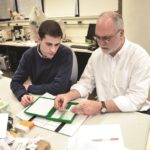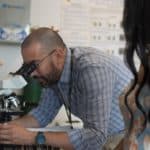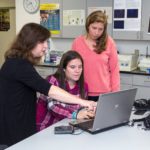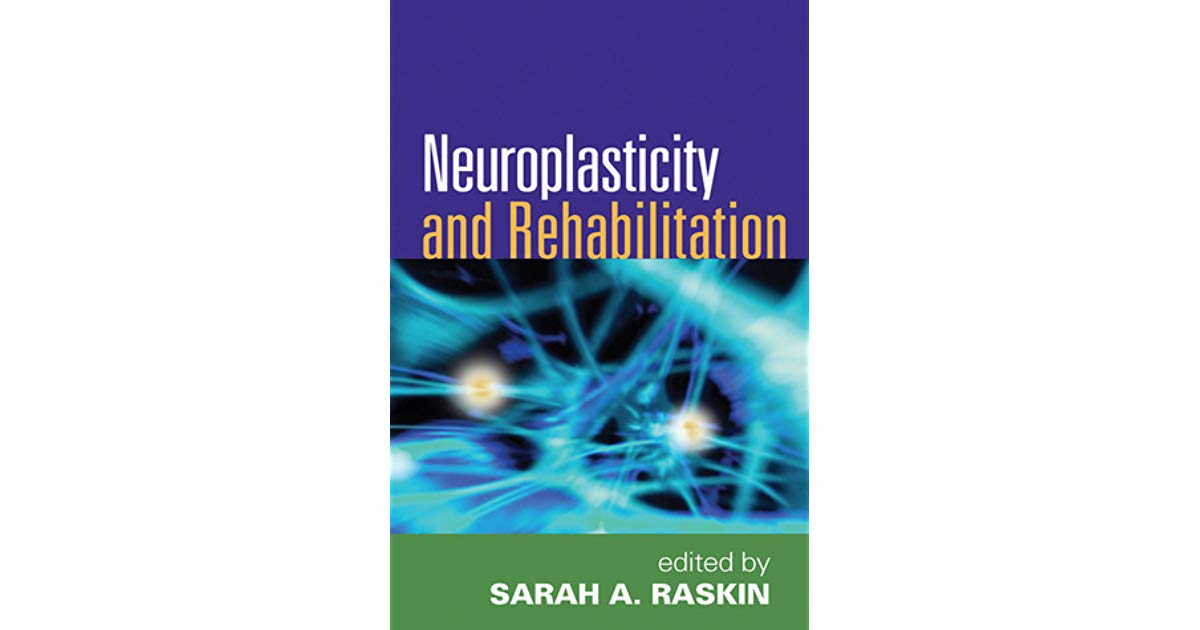Faculty Research Interests
Learn about the research that the Neuroscience Program faculty are doing.
We have active research labs that are all open to student participation in our research. The opportunity for student research is a valued part of the Neuroscience program and all science majors at Trinity College.
Hyperlinks next to faculty names will bring you to a full list of their publications.
Prof. Daniel Blackburn (pubmed)
Biology – Neuroscience
Learn more about Prof. Blackburn’s research
Functional Morphology & Reproduction of Reptiles My research concentrates on the structure, function, and evolution of reproductive specializations in reptiles, particularly features associated with viviparity (live-bearing reproduction) and oviparity (egg- laying reproduction). This work draws heavily on microscopic anatomy, and students interested in working with me ideally should gain experience with electron microscopy before their senior year by taking the half semester course Biology 210 (Scanning EM) and/ or Biology 220 (Transmission EM) before their senior year. These courses and our excellent EM facilities in the LSC and McCook offer wonderful opportunities for Trinity students to learn techniques of immense value to biologists. I sometimes have options for students who wish to focus their attention at the level of light microscopy. Research of several of my recent students has resulted in collaborative research papers, as well as presentations at scientific meetings.
Two major areas of research activity in ‘the Blackburn lab’ are:
1) Placental morphology and evolution of live- bearing reptiles: In viviparous lizards and snakes, embryos develop inside the pregnant female, and are sustained by means of placental organs. My main research interest is in understanding the structure, function, and evolution of these placentas. Our current work is focusing on how anatomical characteristics of the placental membranes of viviparous snakes and lizards enhance provision of oxygen, water, and nutrients to the fetus during gestation. This work involves examination of the cytology and development of the uterus and placental membranes, using light and electron microscopy.
2) Development and evolution of fetal membranes in oviparous lizards and snakes: During development, vertebrate eggs are sustained by cellular structures that provide for the respiratory and nutritional needs of the developing embryos. These structures contribute to the placentas of viviparous species. In reptiles and birds, very little is known about the structural composition of these membranes, and how they develop and function. Our current investigations of reproduction in snakes and lizards use light and electron microscopy to study the development and cytology of these membranes. Resultant data offer insight into important aspects of egg function and evolution. Future work will focus on eggshell anatomy (as seen through electron microscopy) and mechanisms of calcium and water uptake.
 Prof. Harry Blaise (googlescholar)
Prof. Harry Blaise (googlescholar)
Engineering – Neuroscience
Prof. Blaise’s research goals are to develop models and tools to advance the study of the biomedical sciences. He currently conducts research at the intersection of biomedical engineering and neuroscience. He has studied the neurophysiology of learning and memory consolidation using his freely behaving mouse and rat model of long-term potentiation (LTP) and depression (LTD)—two candidate mechanisms accounting for much of the information processing performed by the brain. Dr. Blaise has also investigated the impact of prenatal protein malnutrition and neonatal stress on brain circuits involved in learning. More recently, Dr. Blaise has been conducting research whose ultimate aims are to help better understand the linkages between emotionality and memory. For instance, does one’s emotional state alter the ways in which concurrent events and experiences are remembered? Further, stress is known to be mostly harmful to the brain (e.g., as in post-traumatic stress disorders); but are there situations in which stress might be beneficial to brain function? Prof. Blaise’s research aims are to answer some of these difficult questions.
 Prof. Elizabeth Casserly (pubmed)
Prof. Elizabeth Casserly (pubmed)
Psychology-Neuroscience
Learn more about the Psycholinguistics Lab
In my research, I explore the mechanisms of real-time language use, particularly the means by which we achieve and control everyday speech perception and speech production. Both of these seemingly-effortless processes respond flexibly to a wide range of environmental and conversational demands – altering, for example, the amount of inference operating in speech perception and the acoustic attributes of speech production in the presence of background noise. How do we learn these responses to changes in the environment? What are the boundaries of control and successful communication? What is the relationship between perception and production in speech, particularly in challenging contexts such as communication in a second language, with varying degrees of hearing impairment, or adverse environmental conditions?
My lab uses classic behavioral speech perception experiments, acoustic and articulatory analysis of speech production, and manipulation of the context occurring between talkers and listeners to attempt to answer these questions. The issues they address touch on a wide range of topics, from our understanding of basic perceptual and motor processes, to the relationship between form and purpose in language, to how atypical communication circumstances in schools or clinical settings can be addressed most effectively.
 Prof. Kent Dunlap (pubmed)
Prof. Kent Dunlap (pubmed)
Biology – Neuroscience
Learn more about Prof. Dunlap’s research
Electrocommunication & Physiology of Electric Fish
I examine the influence of social interaction on the brain structure and communication of electric fish. South American weakly electric fish are nocturnally active and live in muddy waters of the Amazon River basin. They use their electric discharges both for locating objects in the environment and for communicating with each other. These fish have a remarkable ability to generate new cells in the brain during adulthood, at about 100 times the rate of adult mammals. Research by Trinity students showed that this production of new cells is influenced by social interaction. Pairing fish with another fish increases the production of cells in a brain region that controls electrocommunication behavior.
In our present research, we address three main questions: 1) What specific component of social interaction is effective in stimulating changes in brain cell production? 2) Do the new cells that are produced contribute to changes in electrocommunication behavior? 3) How do these newborn cells differentiate into mature cells? This research involves examining the expression of certain molecules in the brain using antibodies and florescent microscopy. In a separate project, students examine electrocommunication behavior between different species of electric fish and conduct experiments to determine the sensory pathways involved in this interspecific electrocommunication. This research involves observing fish as they interact and stimulating fish with artificial electrocommunication signals.
 Prof. Michael Grubb (pubmed)
Prof. Michael Grubb (pubmed)
Psychology-Neuroscience
Learn more about the Attention, Perception, Decision Laboratory here
Very broadly, my research addresses how we perceive the physical world in which we are embedded. Every waking moment our senses are bombarded with information, far too much for the brain to process and render for conscious awareness. We overcome this challenge by selectively attending to the world, that is, by prioritizing the processing of some kinds of sensory information, at the expense of others, in ways that facilitate goal-directed behavior. Attention can be allocated voluntarily, through eye movements (overt attention) or cognitive effort (covert endogenous attention), or its allocation can be elicited reflexively in response to stimuli in the physical world (exogenous attention). My lab uses eye-tracking and psychophysical methods to quantify the impact of selective attention on perceptual processes, to characterize the ways in which different kinds of attention jointly modulate perception, and to investigate additional factors that play a role in shaping our subjective experiences of the world.
 Prof. Hebe Guardiola-Diaz (pubmed)
Prof. Hebe Guardiola-Diaz (pubmed)
Biology – Neuroscience
Cell Signaling Pathways in Oligodendrocytes
Oligodendrocytes are extraordinary cells that form the myelin sheath that increases the speed of communication between neurons in the brain. In order to produce myelin, oligodendrocytes must make great amounts of lipids and proteins in their endoplasmic reticulum (ER). Therefore, a healthy endoplasmic reticulum is essential for myelin formation and maintenance. Myelin diseases display accumulation of unfolded proteins that may arise, in part, from failure to adapt to ER stress. I am investigating the interaction between ER function and signaling pathways known to be active in oligodendrocytes. I am especially interested in the signaling protein mTOR, which controls protein synthesis in response to hormones, nutrients and energy levels in the cell. These studies will further our understanding of the endogenous mechanisms that make oligodendrocytes resilient and therefore able to establish a robust myelin sheath in dynamic association with its axon.
 Prof. Molly Helt (pubmed)
Prof. Molly Helt (pubmed)
Psychology-Neuroscience
Understanding the emotions and perceptions of those around you is a critical step in becoming a socially competent being; and one with which young children with ASD often struggle. The earliest way in which very young children begin to understand the emotions of those around them may be through the processes of mimicking the facial expressions of those around them, experiencing peripheral feedback triggered by those mimicked expressions, and then experiencing emotion contagion and emotion synchrony with early social partners (for example, you may have noticed that when someone near you yawns, you too will yawn). In my laboratory, we are studying the ways in which these processes develop in very young children, and whether they appear to constitute foundational skills in social development.
 Prof. Luis Martinez (pubmed)
Prof. Luis Martinez (pubmed)
Neuroscience
Learn more about Prof. Martinez’s work here.
Drug addiction affects both men and women; for many drugs of abuse, however women progress more rapidly from initial use to an addicted state, and report enhanced rewarding effects of these drugs. In adults, female sex steroid hormones (e.g., estrogen, progesterone) play a fundamental role in the expression of this sex difference, by inducing structural and functional plasticity within the brain’s reward pathways. My research focuses on examining the underlying mechanisms whereby steriod hormones act at their receptors to induce these effects. Puberty represents a critical point in the addiction timeline, since it is the point at which drug use is typically initiated, and consequently the point at which sex differences in drug use/abuse first become apparent. I am particularly interested in understanding how the surge in sex steroid hormones that occurs during puberty shapes the developmental trajectory of the reward circuitry of the brain, to ultimately drive sex differences in drug addiction. In my lab, we examine these questions using rodent models of drug addiction combined with neuropharmacology, molecular techniques, and microscopy.
 Prof. Susan Masino (pubmed)
Prof. Susan Masino (pubmed)
Psychology – Neuroscience
The main topic of my research is the neuromodulator adenosine. Adenosine is the core molecule of the cell energy molecule ATP, and it also participates in controlling brain activity. Adenosine helps protect neurons during pathological conditions such as stroke, and is known to stop epileptic seizures, but the ongoing role and regulation of adenosine is less well understood. By combining techniques such as imaging, electrophysiology, and behavior we are revealing more of the underlying cellular mechanisms which regulate adenosine and recording their effects on brain activity. With its dual role in cell energy and brain activity, we are particularly interested in the relationship between metabolism and brain activity.
A major current focus of the laboratory is the relationship between ketogenic diet therapy and the actions of adenosine in the nervous system. A ketogenic diet is high in fat and low in carbohydrates and a highly successful metabolic therapy for reducing epileptic seizures. A ketogenic diet is effective even in cases where all drug treatments have failed, and it is particularly effective in pediatric epilepsy. Adenosine is similarly effective at reducing all types of seizures. We are currently testing this hypothesis and predictions of this hypothesis. This research may yield new insight into the mechanisms underlying the success of ketogenic diet therapy, as well as new insight into how to regulate adenosine.
 Prof. Michael Puljung (pubmed)
Prof. Michael Puljung (pubmed)
Neuroscience-Chemistry
Ion channels are specialized proteins that turn ordinary ionic gradients across the cell membrane into the electrical signals that shape nerve impulses, drive heart beats, underly muscle contractions, and enable sensory perception. When channels are open, ions flow freely through them, generating electrical currents. In the Puljung lab, we use a combination of electrophysiological, biochemical, and spectroscopic techniques to probe the dynamic structural changes that govern ion channel function. Our current interest is in understanding ion channels that are activated or inhibited by the binding of nucleotides like ATP. Such channels regulate excitability in neurons and are implicated in many diseases from neuropathic pain to epilepsy. In particular, we are interested in developing novel ways to measure nucleotide binding to channels in a cellular environment, exploiting these methods to quantify the energetic effects exerted by nucleotides, and delineating the conformational changes induced by nucleotide binding that affect whether the channels are open or closed. We hope that the insights we gain into the working life of these molecular machines will increase our understanding of their physiological function and guide novel therapies for the diseases associated with their dysfunction.
 Prof. Sarah Raskin (pubmed)
Prof. Sarah Raskin (pubmed)
Psychology – Neuroscience
Learn more about the ReMIND lab here
My research primarily involves examining behavioral methods to facilitate changes in human brain structure following damage to the brain. Our research is an attempt to determine which types of practice are most effective and whether they can be effectively used to help people who have had brain damage. We measure effects of treatment using behavioral measures, measures of generalization to daily life and electrophysiological measures (EEG).
People with brain injury experience several types of cognitive deficits. One particular function that is often lost is memory. More specifically, the type of memory that people with brain damage find most troubling is prospective memory. This is the ability to remember to do things in the future (for example, remember to buy milk at the store on your way home). We are currently working on creating measures that more effectively test and treat prospective memory

Prof. Sally Bernardina Seraphin (googlescholar)
Neuroscience
Learn more about the Evolutionary Neuroscience Lab here
I am interested in the evolutionary developmental neurobiology and ecology (Evo-Devo) of stress. Emphasizing an adaptationist perspective that centers on neuroplasticity, my research elucidates the factors underpinning behavioral and physiological correlates of neurogenic, somatogenic and psychogenic stress in human and animal models. In so doing, I have integrated a range of field (behavioral observation, neuroendocrineimmune assays, ecological monitoring) and laboratory research methods or techniques (HPLC, RIA, ELISA, immunohistochemistry, receptor autoradiography, behavioral pharmacology, fMRI) for the multi-levelled analysis of such phenomena. Ongoing research projects include 1) behavioral endocrinology of stress in Budongo Forest chimpanzees, 2) behavioral neuroendocrinology and pharmacology of dopamine in rhesus monkey models of early neglect, 3) brain morphometry in human survivors of childhood maltreatment, 4) neuroethology of stress in neotropical frogs, and 5) theoretical modeling of developmental outcomes associated with early stress.
 Prof. Chris Swart (pubmed)
Prof. Chris Swart (pubmed)
Neuroscience
As laboratory coordinator my main area of interest currently is developing lab modules for use in several neuroscience courses here at Trinity. My goal is to provide students with artificial and animal models, computer software, and cognitive exercises that demonstrate the concepts discussed in neuroscience lecture courses. These laboratory exercises span the range from anatomy to behavior, electrophysiology, chemistry, psychology, and cognitive science. I am very interested in allowing students to experiment with novel animals, models, or apparatus that will foster the skills necessary to promote the pursuit of original thesis research or post-graduate study.
In addition to my main focus on developing new neuroscience labs I am currently involved in two research projects. I have started a series of experiments aimed at describing the structure and function of the Cerebral Ganglion of the freshwater snail, Cipangopaludina chinensis using a variety of techniques including tract tracing, histology, electron microscopy, and electrophysiology. My second area of research interest is in coordination with Prof. Masino’s research on adenosine signaling. I have been using electrophysiology and electrochemistry to understand the relationship between temperature and adenosine regulation in the mammalian hippocampus.
Videos offering a closer look into faculty research
Videos offering a closer look into faculty research

Learn more about Professor Masino and her research

Here is a description of Professor Raskin's research

A discussion with Professor Lloyd about his research
